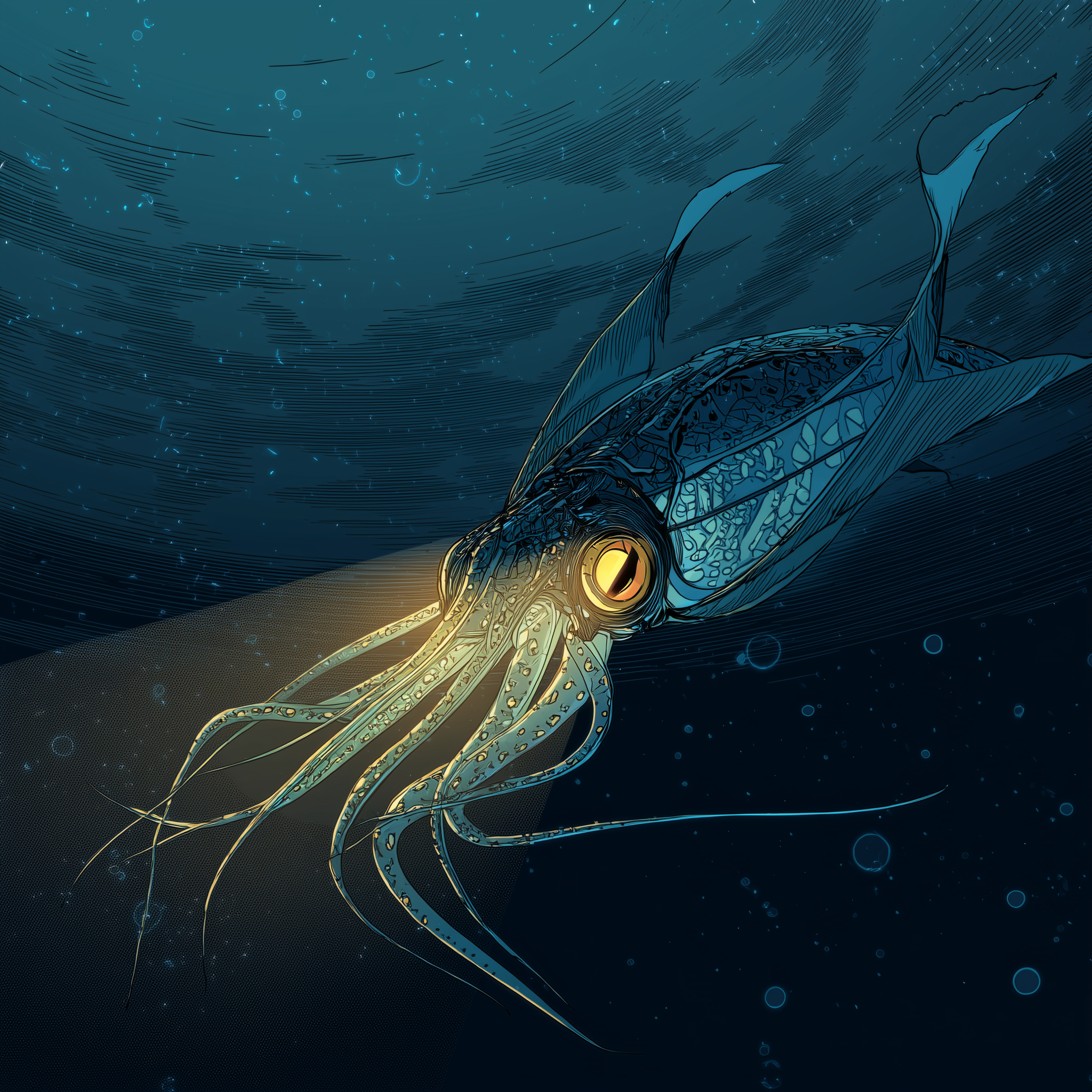Into The Dark 2024: Module V: Pressure Doesn’t Break The System - It Builds It: Deep Sea Adaptions.
I. THE PRIMAL IMAGE
A flash of light pulses 10,000 feet beneath the ocean’s surface. No sun. No warmth. Only pressure and silence. Then a flicker. A lure. A mouth. The anglerfish doesn’t chase. It shines. And what it draws in, it consumes.
The water upends everything we know. It crushes lungs, warps metal, kills sound. But life still emerges: gelatinous, glowing, armored, flexible. The deep doesn’t just test biology. It rewrites the criteria for existence.
II. THE CORE CREATURE / SYSTEM
Deep-sea life forms are engineered by pressure. Not metaphorically, literally. Every inch below the surface increases the crushing weight of the water above. Yet anglerfish, giant isopods, and deep-sea jellyfish persist, not by resisting that pressure, but by folding it into their design. They do not armor up. They evolve inward.
Barophilic (pressure-loving) organisms have evolved flexible phospholipid bilayers, pressure-stable enzymes, and uniquely tuned protein structures that continue functioning under forces that would collapse surface-dwelling life. Some abandon the idea of bones entirely. Instead, they adopt gelatinous forms that bend, distort, and recover, absorbing pressure rather than fighting it.
Their world is dark, but their language is light. Bioluminescence is not a spectacle; it’s signaling, luring, and warning. Energy is conserved with slow metabolism, low mobility, and low redundancy at the surface, but high redundancy at depth. Fragility is replaced with modular function. Sight is replaced with proximity detection, vibration sensitivity, and chemical gradients.
The result is a zone of alien resilience, where systems don’t just survive pressure but metabolize it. The creatures here are not survivors; they are the proof that pressure can be the author of innovation.
III. THE LESSON IN THE DARK
Pressure doesn’t break the system. It reveals what was never built to last.
Adaptation to extreme environments isn’t about brute strength. It’s about flexibility, redundancy, and minimal assumptions. The deep teaches us that survival under pressure means changing behavior, structure, logic, and identity. Pressure doesn't merely test systems, it clarifies them. It peels off the decorative and superficial, leaving behind only what can flex and still hold form.
Most systems fail in the deep. Not because they’re weak, but because they’re rigid. Because they assumed light, assumed praise, assumed certainty. But in the deep, assumptions are liabilities. Pressure is not an enemy. It’s a filter. The lesson isn’t how to endure pressure. It’s how to be built for it from the start. Or better yet, how to treat pressure as input, not a threat. As a signal, not stress.
The deep teaches us that life can adapt to almost anything, not through force but by releasing expectation. It bends the structure. It relinquishes rigidity. It learns to see in darkness, speak in pulses, and survive not by resisting the pressure but by folding it into identity. The organisms that thrive there are proof that evolution is possible under stress and may be perfected by it.
IV. THE SYMBOLIC FRAME
In myth, descent is always transformation. Orpheus descends into the underworld. Inanna is stripped of her power at the seven gates. Jonah is swallowed by the whale. These are not journeys, they are excavations. The abyss is never just a location; it is a crucible. It is where the soft tissue burns off and the bone of identity is revealed.
The deep sea is our modern abyss. It mirrors the unconscious, the startup under collapse, the relationship under strain, and the ego under truth. Like Dante’s descent through the Inferno, each layer strips something away, pride, illusion, resistance, until the soul is uncloaked, exposed, and in dialogue with pressure. This descent isn’t punishment. It’s calibration. The deeper you go, the more honest you become. Everything changes to pure survival.
And like in every true myth, the environment doesn’t destroy the hero, it writes them. The darkness is not the villain. It is the page. It’s not fire that tempers the form, it’s pressure.
What survives the deep is what never needed applause. What returns is not whole; it is honed. Silent. Engineered by ordeal. The deep doesn’t decorate. It distills.
V. THE MODERN MIRROR
Extreme Architecture: Subsystems in aerospace, biotech, and deep-tech built to flex and recover, not resist.
Leadership Under Stress: Crisis-trained leaders who don’t overcorrect, they adjust.
Data Systems: Redundant, distributed, fail-open, and graceful degradation principles.
VI. DEPLOYMENT LOGIC
Build with compression in mind. Don’t assume access to light, air, clarity, or approval. Train systems to thrive in silence, in pressure, in isolation.
Design for:
Redundancy across functions.
Flexibility over polish.
Signal generation in low-data environments.
Rules:
If it can’t compress, it will shatter.
If it needs light, it’s already dead.
If it lasts in the deep, it’s ready for anything.
VII. CLOSING LINE / CALIBRATION STATEMENT
“Pressure doesn’t break it. It shapes it.”
VIII. FIELD NOTES
James used Hydrogen Sulfide to manufacture thiols; he built equipment and rooms to handle hostile, corrosive, and lethal atmospheres to make flavor molecules.
James learned that sometimes the adaption to pressure doesn't always help, while adapting to the pressure of dealing with too many investors, James had to over design his entire life around timing, leaving no time for leisure or family for several years.
James built fermentation systems with various pressures, greater than or less than 1 ATM to adjust the production of various compounds and drive fermentation direction.


